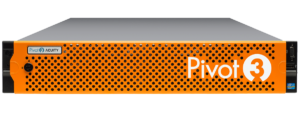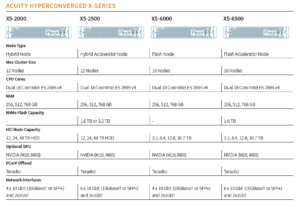It’s conference season again and that means a whole bunch of announcements from HPE across their Hyper-Converged and storage platform. There is a lot to get through so let’s get started:
Hyper-converged
The first announcement is around the SimpliVity hyper-converged platform. SimpliVity was an acquisition by HPE made at the beginning of last year, the platform provides a converged solution of HPE ProLiant compute and VMware hypervisor. Newly announced is that SimpliVity will be broadening supported hypervisors beyond just VMware by also offering Hyper-V supported nodes. There is not complete feature parity in the initial release, with features such as file level restores and Rapid DR not yet supported in the Hyper-V version. But the core SimpliVity functionality of global dedupe and compression plus VM clones is all there, if you are new to SimpliVity check out my quick start guide.
Like in the VMware flavoured version management is all within the native application, so for Hyper-V this is MS Virtual Machine Manager. Currently there are 10 different configurations of VMware SimpliVity model with the Hyper-V variation at launch there will be with a smaller portfolio of 4 offerings. These will be aimed at what today is the most common requirement for Hyper-converged platforms, small and medium deployments commonly found at ROBO sites.
Storage
The storage news focuses on the Nimble platform and includes a refresh of the hardware across the range.
Store more guarantee – HPE are betting that they have pound for pound the most efficient array with their Nimble systems by offering a capacity efficiency guarantee. If you can show that another system is more capacity efficient HPE will match the difference with additional capacity. HPE’s confidence to make this bold claim comes from their architecture which has a low overhead before even considering any data reduction techniques. Any storage system will have an overhead for sparing, system use, RAID etc HPE claim that their Nimble product has less of an overhead than the competition. Once data reduction is applied this free space available from a lesser system overhead brings a significant advantage due to the multiplier effect when compression and dedupe are applied.
SCM / NVME – Nimble storage system are future ready with a promise from HPE that in the future customers will be able to non disruptively upgrade to Storage Class Memory (SCM) and NVMe. HPE see the maximal benefit will be achieved by coupling SCM and NVMe together predicting this could achieve up to a 10x performance boost versus NVMe and flash.
New models – The new range starts with the AF20Q and AF20 which start at 6TB of useable storage and scales up to the AF80 which scales to 4PB of useable capacity, these figures assume 5:1 data reduction ratio.

The hybrid family are called HF scaling from the entry HF20H which offers 821TB of useable capacity the HF60 which has 5PB of useable capacity. The HF20C is designed for workload that require compression only and would not benefit from dedupe.

Both the Hybrid and all flash models have updated intel processors inside which is one of the key drivers to increased performance, which HPE are estimating is +220% versus the current model.
Inline always on dedupe – The Nimble hybrid models benefit from the addition of inline dedupe. This essentially means that deduplication is performed as the data is entering the array.
You can see a summary of the Nimble announcements in this video




